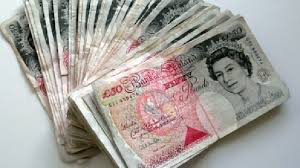
Measured by daily turnover, the foreign exchange (FX) market—the market in which currencies are traded against each other—is by far the world’s largest market. Current estimates put daily turnover at approximately USD4 trillion for 2010. This is about 10 to 15 times larger than daily turnover in global fixed-income markets and about 50 times larger than global turnover in equities. Moreover, volumes in FX turnover continue to grow: Some predict that daily FX turnover will reach USD10 trillion by 2020 as market participation spreads and deepens.
The FX market is also a truly global market that operates 24 hours a day, each business day. It involves market participants from every time zone connected through electronic communications networks that link players as large as multibillion-dollar investment funds and as small as individuals trading for their own account—all brought together in real time. International trade would be impossible without the trade in currencies that facilitates it, and so too would cross-border capital flows that connect all financial markets globally through the FX market.
These factors make foreign exchange a key market for investors and market participants to understand. The world economy is increasingly transnational in nature, with both production processes and trade flows often determined more by global factors than by domestic considerations. Likewise, investment portfolio performance increasingly reflects global determinants because pricing in financial markets responds to the array of investment opportunities available worldwide, not just locally. All of these factors funnel through, and are reflected in, the foreign exchange market. As investors shed their “home bias” and invest in foreign markets, the exchange rate—the price at which foreign-currency-denominated investments are valued in terms of the domestic currency—becomes an increasingly important determinant of portfolio performance.
Even investors adhering to a purely “domestic” portfolio mandate are increasingly affected by what happens in the foreign exchange market. Given the globalization of the world economy, most large companies depend heavily on their foreign operations (for example, by some estimates about 40 percent of S&P 500 Index earnings are from outside the United States). Almost all companies are exposed to some degree of foreign competition, and the pricing for domestic assets—equities, bonds, real estate, and others—will also depend on demand from foreign investors. All of these various influences on investment performance reflect developments in the foreign exchange market.
This reading introduces the foreign exchange market, providing the basic concepts and terminology necessary to understand exchange rates as well as some of the basics of exchange rate economics.
The reading is divided up as follows. Section 2 describes the organization of the foreign exchange market and discusses the major players—who they are, how they conduct their business, and how they respond to exchange rate changes. Section 3 takes up the mechanics of exchange rates: definitions, quotes, and calculations. This section shows that the reader has to pay close attention to conventions used in various foreign exchange markets around the world because they can vary widely. Sometimes exchange rates are quoted in the number of domestic currency units per unit of foreign currency, and sometimes they are quoted in the opposite way. The exact notation used to represent exchange rates can vary widely as well, and occasionally the same exchange rate notation will be used by different sources to mean completely different things. The notation used here may not be the same as that encountered elsewhere. Therefore, the focus should be on understanding the underlying concepts rather than relying on rote memorization of formulas. We also show how to calculate cross-exchange rates and how to compute the forward exchange rate given either the forward points or the percentage forward premium or discount. In Section 4, we discuss alternative exchange rate regimes operating throughout the world. Finally, in Section 5, we discuss how exchange rates affect a country’s international trade (exports and imports) and capital flows. A summary and practice problems conclude the reading.
Summary
| status | not read | reprioritisations | ||
|---|---|---|---|---|
| last reprioritisation on | suggested re-reading day | |||
| started reading on | finished reading on |